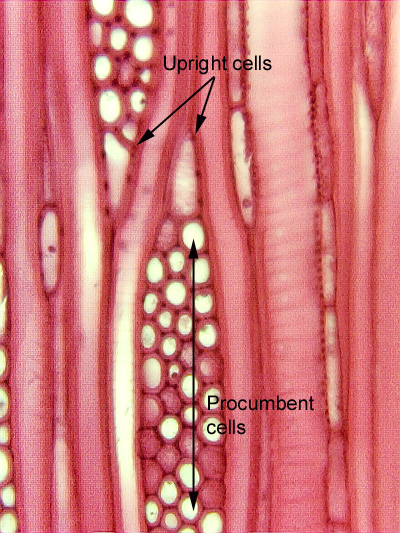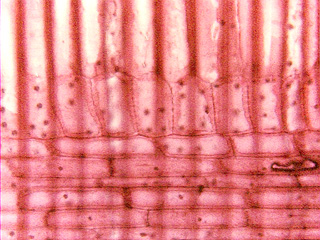 Fig.
15.3-6a and b. Tangential and radial
sections of American holly (Ilex opaca). Upright
cells can be recognized because they are taller than the procumbent
cells. This is usually especially easy to see in radial sections,
because in that view, it is also possible to see that the procumbent cells are
radially longer than the upright cells. But even in tangential section, the two
cells types are usually easy to distinguish. However,
not all species have rays cells that can be classified as one or the other,
their shapes being less distinctive.
Fig.
15.3-6a and b. Tangential and radial
sections of American holly (Ilex opaca). Upright
cells can be recognized because they are taller than the procumbent
cells. This is usually especially easy to see in radial sections,
because in that view, it is also possible to see that the procumbent cells are
radially longer than the upright cells. But even in tangential section, the two
cells types are usually easy to distinguish. However,
not all species have rays cells that can be classified as one or the other,
their shapes being less distinctive.
Notice that in the lower
micrograph, the upright cells are arranged in just a
single row. That is quite common, but it is not unusual to
encounter species that have two or three rows of upright cells along their top
or bottom margin. When that occurs, the
uppermost upright cells may differ slightly from those of the other rows.